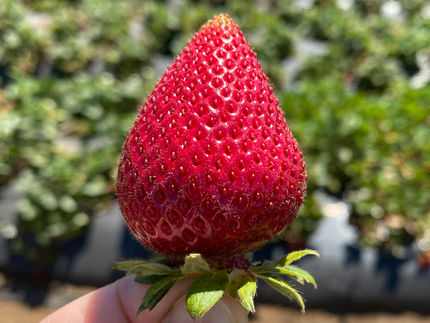Resistant rice plants
TU Graz identifies bacterium that protects rice plants from disease
Advertisement
With their microbiome expertise, the researchers at the Institute of environmental biotechnology were able to demonstrate how a specific bacterium inside the seeds of rice plants effectively inhibits destructive plant pathogens in an environmentally friendly manner.

Photo by Pierre Bamin on Unsplash
Rice is the staple food for about half of the world's population. Cultivation of the rice plant is very water-intensive and, according to Welthungerhilfe, around 15 percent of it is grown in areas with a high risk of drought. Rising global warming is therefore becoming increasingly problematic for rice cultivation and is leading more and more often to low harvests and hunger crises. Crop failures due to plant pathogens further aggravate the situation. Conventional agriculture tries to counteract this with pesticides, which are mostly used as a precaution in rice cultivation. Resistant plant varieties are the only alternative to these environmentally harmful agents - and are currently only moderately successful. If plants are resistant to one pathogen thanks to their breeding, they usually become more susceptible to other pathogens or are less robust under adverse environmental conditions.
Bacterium leads to pathogen resistance
An international research group with the participation of the Institute of Environmental Biotechnology at Graz University of Technology has therefore been studying the microbiome of rice plant seeds for some time in order to establish correlations between plant health and the presence of certain microorganisms. The group has now achieved a major breakthrough: they identified a bacterium in the seed interior that can lead to complete resistance to a specific pathogen and is naturally transmitted from one plant generation to another. The findings, published in the journal Nature Plants , provide a completely new basis for designing biological pesticides and additionally reducing biotoxins produced by plant pathogens.
The rice microbiome
In conventional rice cultivation in China's Zhejiang province, it has been observed that resistance to the plant pathogen Burkholderia plantarii sometimes appears in one genotype of rice plants (cultivar Zhongzao 39). This pathogen causes crop failures and also produces a biotoxin that can lead to organ damage and tumors in persistently exposed humans and animals. "Until now, the isolated resistance of rice plants to this pathogen could not be explained," says Tomislav Cernava from the Institute of Environmental Biotechnology at TU Graz. Together with the luminary of microbiome research and head of the institute Gabriele Berg and his institute colleague Peter Kusstatscher, Cernava has therefore investigated the microbiome of rice seeds from different regions in detail as part of a cooperation with the Chinese universities of Zhejiang (Hangzhou) and Nanjing and with the Japanese Hokkaido University in Sapporo.
Bacterial composition as a decisive factor
The scientists found that the resistant plants have a different bacterial composition inside the seeds than the disease-susceptible plants. In particular, the bacterial genus Sphingomonas was found significantly more often in resistant seeds. The researchers therefore isolated bacteria of this genus from the seeds and identified the bacterium Sphingomonas melonis as the effect carrier. This bacterium produces an organic acid (anthranilic acid) that paralyzes the pathogen, rendering it harmless. "This also works when the isolated Sphingomonas melonis is applied to non-resistant rice plants. This automatically makes them resistant to the plant pathogen Burkholderia plantarii," explains Tomislav Cernava. In addition, the bacterium establishes itself in certain rice genotypes and is then naturally passed on from one generation of plants to the next. "The potential of this finding is enormous. In the future, we will be able to draw on this strategy to reduce pesticides in agriculture and at the same time achieve good crop yields," emphasizes Cernava.
Note: This article has been translated using a computer system without human intervention. LUMITOS offers these automatic translations to present a wider range of current news. Since this article has been translated with automatic translation, it is possible that it contains errors in vocabulary, syntax or grammar. The original article in German can be found here.



























































